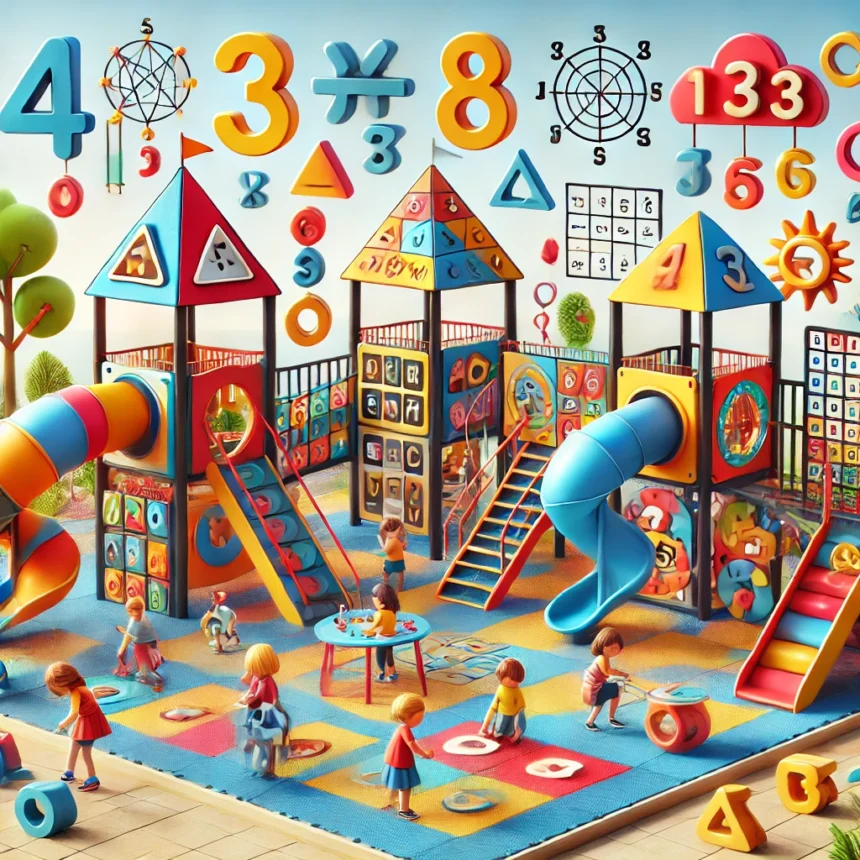Introduction:
Math Playground – Turning Numbers Into Play
Math,meanwhile,is always a favourite(most of the times the only) subject for which people have been hitting their heads against the books, regardless of its perceived toughness, seeing it from another angle makes it an avenue of exploration rather than an enigma. A math playground is an inspiring grey area where learning meets playing in a perfect harmony that makes learning mathematics so enjoyable for children of whatever age. In this post I want to talk about what a math playground is and why it matters and how you can create your own to encourage a love of numbers.
What is a Math Playground?
Alternatively, a math is an interactive access that provides a fun way to learn math. Playgrounds can be physical spaces filled with games and equipment or digital platforms that host a variety of math-oriented activities. The idea is to real life connect their learnings as much as possible, something traditional classroom settings sometimes do not get around to.
Benefits of a Math Playground
Engagement and Motivation:
A playground attracts the attention of kids, and this makes them more likely to engage in activities that improve their math capabilities.
Hands-on Learning:
Playing games and engaging in activities give children a great way to learn too and a tactile understanding of maths is key to understanding more complex concepts.
Building Confidence:
This is the type of mindset that will reinforce math in a playful way and through solving problems, she and he will feel much more confident in the subject.
Encouraging Collaboration:
A large number of playground activities have been crafted to be solved in the group, influencing teamwork and coming up with an answer collaboratively.
The Way to Construct Mathematic Playground in Dwelling
You do not need a bunch of space or expensive equipment to create a math playground in your home. In order for you to get the ball rolling, here are some tips:
Use Everyday Objects:
Household items like measuring cups, dice, and cards can be incorporated to make math games fun.
Digital Resources:
Play online mathematical games and apps. Websites like Math Playground Coolmath Games Funbrain
Outdoor Activities:
Make Outdoor Play Learning Time Play hopscotch with numbers, chalk games, and scavenger hunts outside with math.
Puzzles and Board Games:
Spend money on puzzles and math-oriented board games (think Sudoku, math bingo, and number puzzles).
Best Math Playground Activities
Math Bingo:
Numbers and math problems take the place of traditional bingo cards in this fun variation on the classic game.
Interactive Apps:
You can get apps like Math and Prodigy that include an array from games that grow with your child, making for a more personalized learning experience.
DIY Math Games:
Make math games with easy to find materials Notice, such as a Quantity Line Hopscotch, or a enjoy list instances multiplication football, etc.
Educational Videos:
Use fun and engaging math explanation videos As do YouTube channels such as Khan Academy Kids.
FAQs
Q: Will his or her math anxiety be improved by a math playground?
A: Sure – a math playground can make math less frightening by introducing it in an appealing and fun way, which helps with math anxiety.
Q: Do I need to purchase any special math materials to create a math playground?
A: No, with everyday items around the house and free online resources.
Q: How regularly my child access the math playground?
A: Using it regularly and consistently is best. Try to do it at least a few times a week to stay up to date and motivated.
Q: Are there any online playground for the upper grades?
Technically, yeah. Stuff for, like, older kids and teenagers on websites like Coolmath Games and Math Playground.
Improving the Experience of Math Playground
Incorporate Storytelling:
Math problems are generally boring, so illustrate them in a story. For instance: frame story where people are solving math problems in the story to move from one stage to another.
Use Technology:
Use tablets and interactive whiteboards to bring a different dimension to the classroom, making this their natural work environment It will allow the user to use the Google Classroom or Kahoot! engage elementary students in math-related games
Reward Systems:
Use a reward structure to entice participation. Some have gone as basic as stickers others as detailed as a point system for which students can earn rewards (think every challenge you do in Math earns you a point, so many points you get to go to “x”)
Parent Teacher involvement
Parents and their involvement as well as the participation of teachers during learning experience is highly beneficial. By giving regular feedback and encouragement, children feel able to zone in on math problems with increasing confidence and interest.
Field Trips:
Plan field trips to locations where math is used in the real world, such as science museums or bank buildings. This article shows the math in action and can stir a curiosity about the topic.
Case Study: Example Math Playground
The Digital Math Playground:
A nearby school adopted the Math website. They found that students who spent more than 60 percent of their time on computers scored better on math exams, and that their general interest improved, the teachers reported.
Community Math Park:
A community turned a neglected park in to a math playground with a collection of interactive installations including mega abacuses and giant number mazes. So the program not only helped children with math but it also built a sense of camaraderie.
Home-based Math Playground:
Parent built a math playground at home with stuff already lying around Activities such as cooking measurements and DIY board games, as well as baking, helped lesson the feeling of daily repetition, which resulted in enhancements in math comprehension.
Conclusion
You can create a math playground, a great tool to do mathematics with kids. Through games, online tools, and hands-on activities, you can foster a lifelong relationship between your child and math. No matter if it is at home or online, a math is a must for young learners to teach them and provide confidence in learning.










